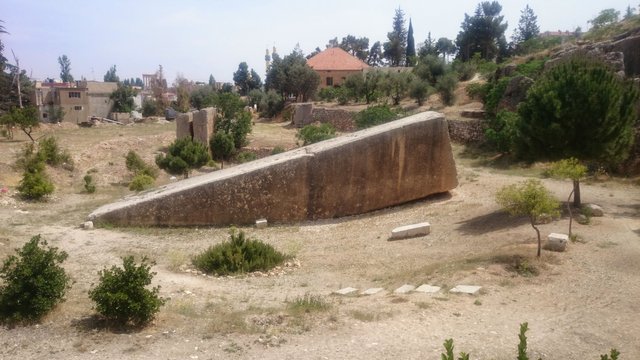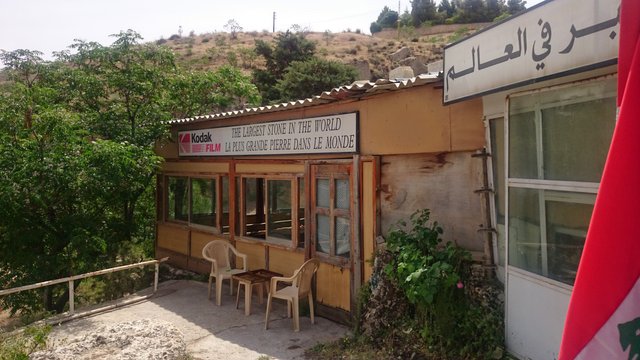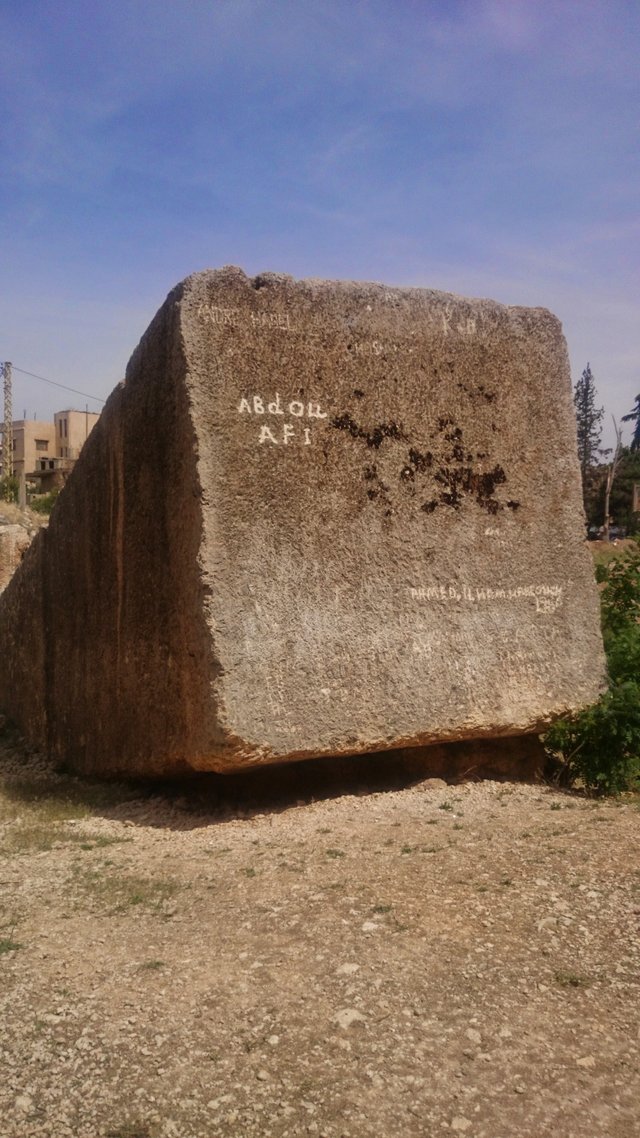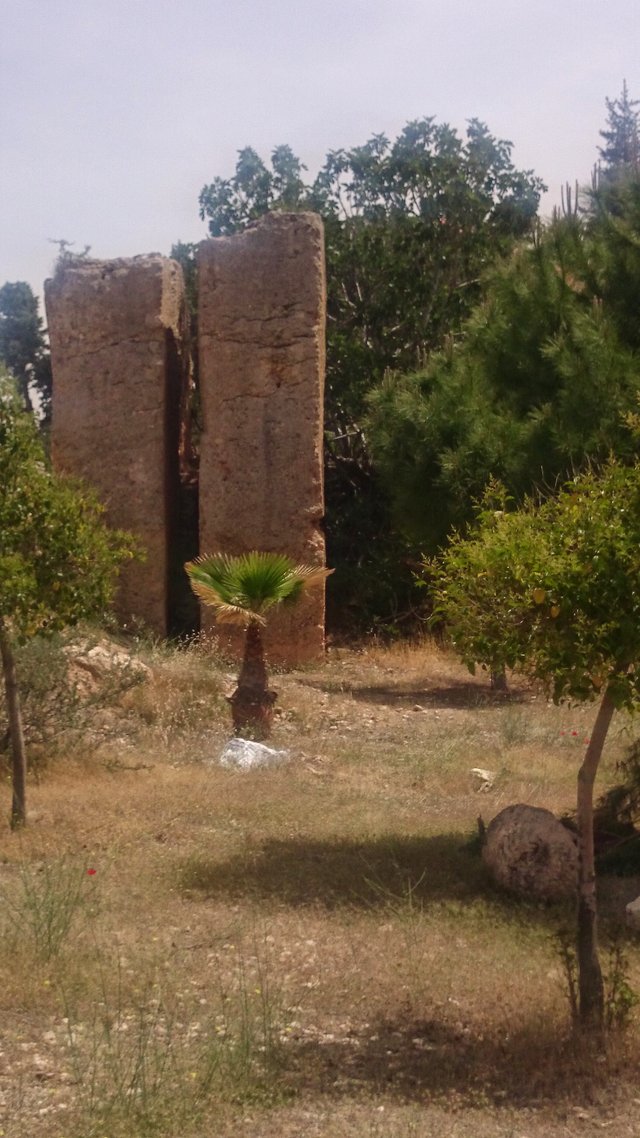Lebanon 2014: a photo-memoir. Part three: la plus grande pierre dans le monde

Do not find fault with your day before it is over. - Lebanese proverb
The road twists upwards into the almost-bare escarpments of the Mount Lebanon range. Maronite villages. Catholic villages. Orthodox villages. Large new-built mansions our guide says are a way for emigrants to show off without coming home themselves. Hairpin bends. Lebanese army checkpoints. We are en route for Baalbek, but first we will visit the biggest stone in the world.
And before that we enter the Bekaa valley. Sheikh Nasrallah scowls out over field after field of tomato crops in a landscape infamous for hashish. And hostage-taking. My countryman Brian Keenan was among those held here in the 1980s. The sun is fierce. The checkpoints now are Hezbullah. The Hez. They wave us through, watched by Khomeini, on our way to see the largest stone in the world.

Do not eat garlic and you will not smell of garlic. - Lebanese proverb
Just a few miles away, over that mountain ridge, the civil war in Syria is still young. Its refugees are camped in fields by the roadside. We catch glimpses of men gathered on rugs and plastic chairs in the largest of the white tents. The elders. Our guide points out an almost-identical camp a few minutes later, except that in this one the tents are brown. Bedouin, not refugees exactly: the war’s hard border has slammed down on their traditional nomadic route. They have stopped to wait it out.

Give the labourer his wages before his perspiration dries up. - Lebanese proverb
The village of Baalbek is dusty, full of languorous noonday Hez checkpoints, dish antennae, soldiers around plastic picnic tables. Camouflage and sandbags. Khomeini and Nasrallah, black robes bleached by the sun to an aubergine purple. We pull off the road and down to the quarry. There’s a gift shop, run by the family who cleared away the village’s rubbish-dump to excavate this oddly-moving tourist attraction. Askew in the dust, huge stones meant for the huge nearby Roman temple complex at Baalbek, but never fully excavated.
One thousand tonnes, more than 20 metres long, four metres square in cross-section. Still attached to the living rock. The Stone of the South, Hajjar el-Qublah. Alternatively, the Stone of the Pregnant Woman, Hajjar el-Hubla. They say that a vagrant (a refugee?) mother-to-be, starving, persuaded the villagers that she would free the great stone if they would only feed her until the child was born.
It is not recorded that they did, or, if they did, what happened when they found she had not freed the stone after all. Another monolith in the same quarry has been named Janeen, the baby - perhaps they were turned to stone? The baby, at something like 1,650 tonnes, is bigger than the mother. It is the largest stone ever carved by humans.

Man is a wingless bird. - Lebanese proverb
Above scrub and stunted cypress, beyond straggly rooftops, I can see the columned portico of a minor temple in the Baalbek complex. It echo minarets and telecommunications masts. In the visitors’ book in the gift shop, I find a name from Bangor, County Down, a town just a few miles from our home. He was here only last week. He may still be in Lebanon. Small world, beside the largest stone in the world.

The word "If" was planted, but it didn't sprout. - Lebanese proverb
This is the third in a series of short photo-essays on a trip to the Lebanon made in 2014. The first episodes can be found here and here. If you’re interested in the stones, ignore the lunatic gibberish from the woo-peddlars of the Ancient Origins website, and check out a more rational account in the New Yorker instead.
Very interesting and well done. Thanks.
Thanks for reading and commenting, Imar.